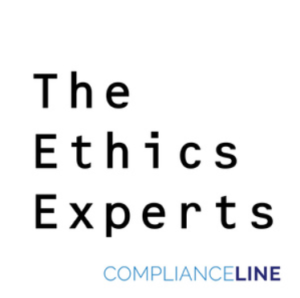What specifically are internal controls in a compliance program? Internal controls are not only the foundation of a company but are also the foundation of any effective anti-corruption compliance program. The starting point is the FCPA itself, which states the following:
Section 13(b)(2)(B) of the Exchange Act (15 U.S.C. § 78m(b)(2)(B)), commonly called the “internal controls” provision, requires issuers to devise and maintain a system of internal accounting controls sufficient to provide reasonable assurances that—
(i) transactions are executed in accordance with management’s general or specific authorization;
(ii) transactions are recorded as necessary (I) to permit preparation of financial statements in conformity with generally accepted accounting principles or any other criteria applicable to such statements, and (II) to maintain accountability for assets;
(iii) access to assets is permitted only in accordance with management’s general or specific authorization; and
(iv) the recorded accountability for assets is compared with the existing assets at reasonable intervals and appropriate action is taken with respect to any
differences ….
The DOJ and SEC, in the FCPA Resource Guide, 2nd edition, stated:
Internal controls over financial reporting are the processes used by companies to provide reasonable assurances regarding the reliability of financial reporting and the preparation of financial statements. They include various components, such as: a control environment that covers the tone set by the organization regarding integrity and ethics; risk assessments; control activities that cover policies and procedures designed to ensure that management directives are carried out (e.g., approvals, authorizations, reconciliations, and segregation of duties); information and communication; and monitoring.
…the design of a company’s internal controls must take into account the operational realities and risks attendant to the company’s business, such as: the nature of its products or services; how the products or services get to market; the nature of its work force; the degree of regulation; the extent of its government interaction; and the degree to which it has operations in countries with a high risk of corruption.
Perhaps the best definition I have ever heard came from Jonathan Marks, Partner at Baker Tilly, who defined an internal control as
Internal controls expert Joe Howell, former Executive Vice President (EVP) at Workiva, Inc., has said that internal controls are systematic measures, such as reviews, checks and balances, methods and procedures, instituted by an organization that performs several different functions. These functions include allowing a company to conduct its business in an orderly and efficient manner; to safeguard its assets and resources, to detect and deter errors, fraud, and theft; to assist an organization ensuring the accuracy and completeness of its accounting data; to enable a business to produce reliable and timely financial and management information; and to help an entity to ensure there is adherence to its policies and plans by its employees, applicable third parties and others. Howell adds that internal controls are entity wide; that is, they are not just limited to the accountants and auditors. Howell also notes that for compliance purposes, controls are those measures specifically to provide reasonable assurance any assets or resources of a company cannot be used to pay a bribe. This definition includes diversion of company assets, such as by unauthorized sales discounts or receivables write-offs as well as the distribution of assets.
The COSO, in its 2013 publication entitled “Internal Controls – Integrated Framework”, defined internal controls as “a process, effected by an entity’s board of directors, management, and other personnel, designed to provide reasonable assurance regarding the achievement of objectives relating to operations, reporting, and compliance.” More specifically, internal controls are, according to COSO:
- Geared to the achievement of objectives in one or more categories – operations, reporting, and compliance
- A process consisting of ongoing tasks and activities – a means to an end, not an end in itself
- Effected by people – not merely about policy and procedure manuals, systems, and forms, but about people and the actions they take at every level of an organization to affect internal control
- Able to provide reasonable assurance – but not absolute assurance, to an entity’s senior management and board of directors
- Adaptable to the entity structure – flexible in application for the entire entity or for a particular subsidiary, division, operating unit, or business process
The Integrated Framework goes on to note, “This definition is intentionally broad. It captures important concepts that are fundamental to how organizations design, implement, and conduct internal control, providing a basis for application across organizations that operate in different entity structures, industries, and geographic regions.”
Why are internal controls important in your compliance program? Two FCPA enforcement actions demonstrate the reason. The first came in late 2013 when the DOJ obtained a criminal plea from Weatherford International. There were three areas where Weatherford failed to institute appropriate internal controls. First, around third parties and business transactions, limits of authority and documentation requirements. Second, on effectively evaluating business transactions, including acquisitions and JVs, for corruption risks and to investigate those risks when detected. Finally, in the area of gifts, travel and entertainment expenses, they were not adequately vetted to ensure that they were reasonable, bona fide, and properly documented.
The second case involved the SEC 2017 FCPA enforcement action with Halliburton. In this matter, Halliburton’s internal controls were circumvented and over-ridden which led to a FCPA violation without evidence of a bribe being paid. It was a civil FCPA enforcement action. It demonstrated that internal controls must be shown to be effect under the FCPA and without such a showing there can be a large financial penalty paid by a violator.
The whole concept of internal controls is that companies need to focus on where the risks are, whether they be compliance risks or other, and they need to allocate their limited resources to putting controls in place that address those risks, and in the compliance world, of course, your two big risks are the assets or resources of a company. Not just cash but inventory, fixed assets etc., being used to pay a bribe, and then the second big element would be diversion of company assets, such as unauthorized sales discounts or receivables and write offs, which are used to pay a bribe.
As an exercise, I suggest that you map your existing internal controls to the Ten Hallmarks of an Effective Compliance Program or some other well-known anti-corruption regime to see where control gaps may exist. This will help you to determine whether adequate compliance internal controls are present. From there you can move to see if they are working in practice or “functioning.” Internal controls will only become more important in FCPA enforcement. In this chapter, you will learn how to get ahead of the curve.







